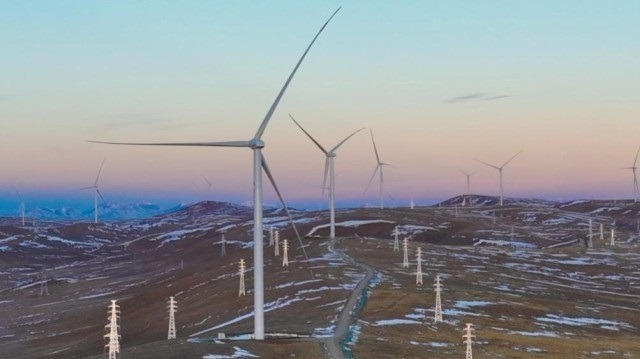
As we step into the new year, it brings a wave of fresh projects, ambitious goals, and groundbreaking achievements. In Tibet, known in China as the Xizang Autonomous Region, a monumental stride in renewable energy has been accomplished, marking a remarkable feat. Marking a significant milestone in the wind energy sector, the world’s largest ultra-high-altitude wind farm commenced operations on January 1, 2024, setting a new benchmark in sustainable energy development.
Built at an impressive altitude of 15,256 feet, the wind farm faces considerable challenges from its environment, including extreme weather conditions such as heavy snowfall, persistent rain, intense sunlight, strong winds, and sand. Despite these hurdles, the 100-megawatt facility stands as a testament to human ingenuity and resilience, earning the title of being ultra-high due to its location which ranges between 11,483 feet and 18,045 feet above sea level.
The Developers
The project’s developer, CHN Energy, has not only achieved this remarkable engineering feat but also set a precedent for future ventures. This pioneering wind farm paves the way for the development of other large-scale ultra-high altitude wind farms, aligning with the company’s vision to expand its green initiatives and significantly reduce its carbon footprint. The successful launch of this facility marks a stepping stone toward creating more wind farms, further bolstering the global shift towards sustainable energy sources.
Hu Jiansheng, the visionary developer behind this project, revealed that the design and execution of the wind farm utilized a smart wind power platform. He elaborated on the challenges overcome during the construction, saying, “With stability control technology, we have overcome the problems caused by the ultra-high altitude, including the low efficiency of wind energy conversion and the deceleration of wind turbines’ blades.”
The Impact
Currently, this groundbreaking wind farm is channeling clean electricity to around 140,000 households in Nagqu City, one of Tibet’s prefecture-level cities. It stands as a beacon of green energy, contributing significantly to the region’s power supply with minimal environmental impact.
This wind farm not only represents a remarkable engineering achievement but also signifies a major leap forward in harnessing wind energy under challenging conditions. It underscores the potential of renewable energy projects to overcome geographical and environmental barriers, paving the way for a future where clean and sustainable energy is accessible even in the most remote and challenging locations.

